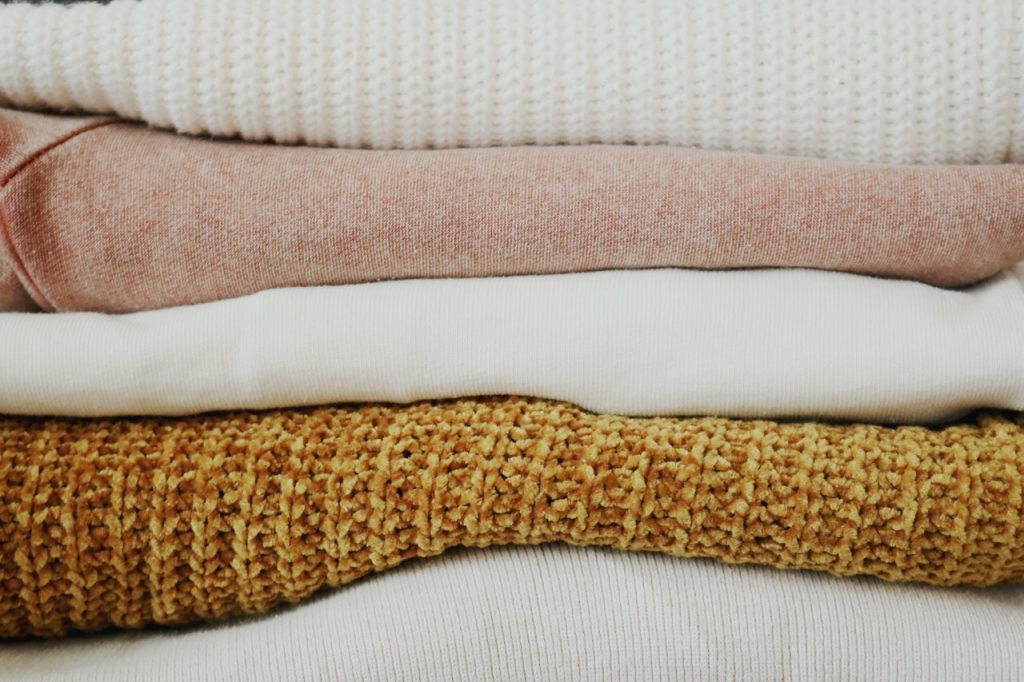You could be ruining your clothes without realizing it. Aside from the detergent coming too strong, there are subtler ways clothes can be mishandled. For instance, if you didn’t conduct regular dryer vent cleaning, the dryer could overheat, which could then cause cloth shrinkage or pigment loss. Zippers left undone could hook onto the other clothes.
Indeed, there’s a lot more to laundry than meets the eye. Most clothes become unwearable before their lifespan ends because of haphazard laundry practices. When the clothes pile up and you have other things to do, it’s understandable to take the shortcut. But it doesn’t have to take much of your time.
Some fabrics do need more attention and care. Still, with practice, a proper laundry routine can be second nature.
Cashmere
This is a type of wool from certain types of goats. Goats shed their winter coat in spring, when this fabric is often obtained. A delicately soft material without being too glossy as silk, cashmere is a timeless fabric for luxury clothing and design.
Perhaps this is why there’s a myth that cashmere should only be dry-cleaned or professionally cleaned. But it’s just the opposite: cashmere isn’t meant to be dry-cleaned; it should be washed. It is basically animal hair. You would wash your hair, wouldn’t you? Gwen Whiting of New York’s The Laundress said that dry cleaning is like “giving cashmere a perm.”
Gwen Whiting and business partner Lindsey Boyd were prompted to quit their former jobs when they found out that this cashmere-handling myth reached the cashmere manufacturers themselves. But for the most part, the “dry clean only” label they use is a form of protection in case customers later have an issue with the product, according to Whiting.
So you can put cashmere in the washer, but use cold water only and set it to delicate. It would also be helpful to turn the clothes inside out.
Cotton
For comfortable clothing that can be styled up for both formal and casual attire, cotton is your go-to fabric. It is made of a soft natural fiber harvested from the seeds of a shrub. There is “pre-shrunk” cotton clothing that can be washed in harsh temperatures. But it isn’t always labeled, and you might not have the time to check. The safest way is to assume that all cotton clothes you have are not pre-shrunk, so you should use only cold water to wash them.
If you wash your cotton clothes by hand, create bubbles by agitating the soapy water mix with your hands. Allow the clothes to soak for a bit and gently scrub the edges. Squeeze excess water without wringing out the fabric.
Silk
Showing off a lustrous shine, silk is a favorite fabric for cocktail dresses and ball gowns. It can look luxurious, but so does the care it needs.
Silk cannot be washed if the colors are not “fast.” Colorfastness is the ability of the fabric to retain its original hue.
The Silk Association of Great Britain suggests testing for colorfastness before you wash silk clothes. Start by wetting a piece of the silk cloth with cool water. Then lay the silk cloth on a piece of white material. Press with a working iron. If no color or mark is made on the white fabric, you can include the silk cloth in the washer. It’s best to use a mild detergent. Remove excess water by rolling the cloth in a towel. Like cotton, silk should not be squeezed out.
Polyester
A synthetic material from coal, air, water, and petroleum, polyester is cheaper than most fabrics, making it the choice for department stores and mass-producing clothing lines.
Since polyester is made in a factory or plant, it is a durable material that can withstand tumble wash and dry. But this doesn’t mean that no caution should be considered. The dryer should be set to low. While still damp, the cloth should already be taken out to avoid static buildup.

Spandex
It may not be Victoria’s Secret, but spandex is an inconspicuous material that has helped many women achieve a form-hugging figure so that they can slip into any dress they want. Spandex was created by a chemist at DuPont. It is an anagram for the word “expands.” The material is extremely elastic and fitted at the same time.
Harsh laundry methods can cause the material fibers to bubble and lose their elasticity over time. They can also cause colored spandex to bleed. Colored spandex should be washed separately.
For foot stockings, baking soda is a natural antiseptic that you can use to remove odor.
Handle Everything with Care
If you take care of things, they will last. With proper maintenance, your wardrobe can last you generations of style revamps and retro revivals. Make sure that you take note of these basic guidelines on your next laundry day.

